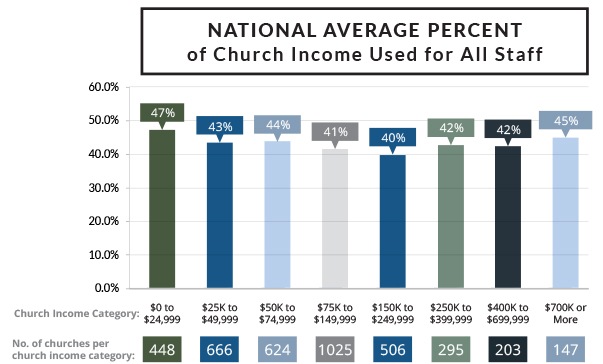Written by Don Walter
From his column A Minute with Don
 Over the past 35 years I’ve watched changes of many kinds in the Church of the Nazarene in the United States. Since the work of Pensions and Benefits USA is intended to assist local congregations and districts with the benefit and compensation efforts on behalf of their lay and clergy employees, changes within this context have been of special interest. Trends indicate a shift in the social contract that exists between the employing church and those employed.
Over the past 35 years I’ve watched changes of many kinds in the Church of the Nazarene in the United States. Since the work of Pensions and Benefits USA is intended to assist local congregations and districts with the benefit and compensation efforts on behalf of their lay and clergy employees, changes within this context have been of special interest. Trends indicate a shift in the social contract that exists between the employing church and those employed.
The ability of an employing church to sustain historic levels of compensation is declining. This reflects a convergence of diminishing church income along with increased costs for basic benefits. In the late 1970s and early 1980s, employee compensation for a typical congregation as a percentage of total spending would have been in the mid to upper 20s. In the early 2000s, it increased to the low to mid 30s, in large part due to rising health care costs and related health insurance premiums. Today, it is approaching 43% of total local church expense. Generally, this is not the result of increases in compensation, but rather from a decline in congregational income.

In 2000, in the U.S. and Canada, we reported average worship of 513,746 with income per church of $129,517. Had income alone increased at a modest 2% annually until 2017, average church income would have grown to $181,000. Instead, in 2017, average income was reported as $143,248. For perspective, the current 43% factor for compensation would be $61,596. If 43% were taken out of $181,000, it would be $77,830, or about 26% higher. Or, from another perspective, if $61,596 were taken as a percentage of $181,000 it would represent 34% of spending rather than 43%.
Also, worship attendance has declined, along with per capita giving. Current per capita giving is reported as $1,608. If the average income per church had grown as noted above, current per capita giving, based on actual worship numbers, would be about $2,032, again, approximately 26% higher. If worship and giving had both grown at a compounded 2% annually, the per capita number would be about $1,804, or about 12% greater. This combination of declining attendance and per capita giving is creating a compensation model which is not sustainable. These numbers do not take into account the rising costs, in most parts of the country, of buildings, property, utilities, and other expenses.
Along with these economic shifts, we have an aging clergy. The single largest age categories of our ministers are currently 65+, 60 to 63, and 55 to 59, in that order. The average age of district-licensed clergy is 43. The delay in taking retirement among older clergy reflects many factors, not the least of which is a lack of financial retirement readiness. Morbidity and mortality make this age distribution unsustainable.
Until the early 1970s, the Nazarene program for economic sustenance for retired clergy and their widows was charity or benevolence. Few dollars were available and dire financial need had to be demonstrated to receive even modest assistance. In 1971, we started a formal “pension plan” with limited assets and significant liabilities. Income for P&B was increased through allocations, and we have spent the last 47 years trying to provide modest benefits for current, future, and past generations from this one P&B Fund source.
The inability to sustain those expectations was recognized in the mid-1990s, when increasingly more responsibility for clergy retirement and health and welfare benefits was shifted to each local congregation. In part, based on the above data regarding the declining financial strength of local congregations, many clergy and local church employers did not or could not assume the full retirement contribution responsibility for employed clergy.
Declining attendance and financial viability, along with an aging workforce with too few younger people entering the ministry, has created a situation that is not sustainable. Our denominational polity leaves the arrangement for work and compensation expectations, for the most part, a matter to be resolved between local churches and their employees. Some have done well enough in this system, but many have not. We have no “Human Resources” policy at a district or national level to review or address the situation. Collectively we are at the mercy of the best intentions of each congregation.
What has transpired within the church in these areas cannot be blamed on clergy or congregations, and that is not the purpose of this article. No one could foretell the many changes that would occur within churches of most denominations, not just Nazarene, over the past few decades. Rather, the reason for sharing these observations is to call attention to the financial realities ministers and congregations deal with and likely will continue to face for a while. God will, as always, provide for His church and those who answer the call to Christian ministry; however, the future before us is one that will call for increased effort, creativity, and cooperation between pastors and congregations.
Don Walter is director of Pensions and Benefits USA for the Church of the Nazarene.
